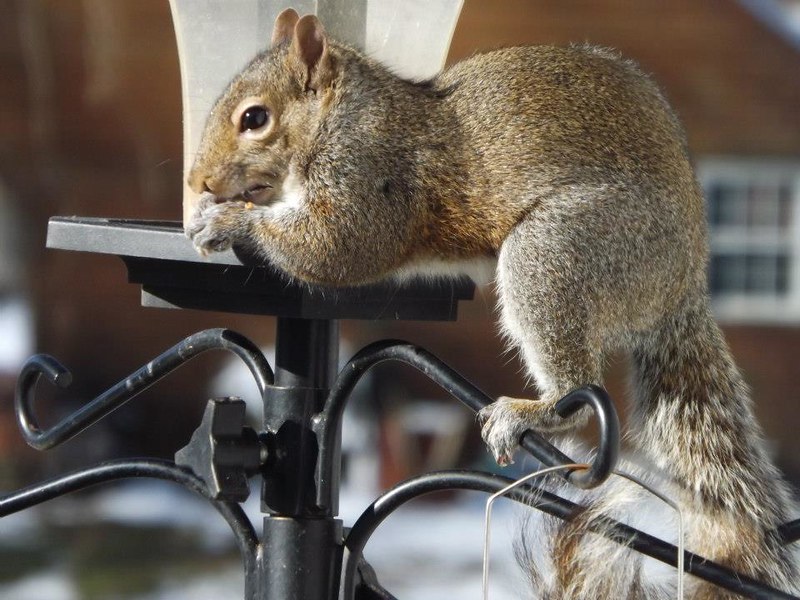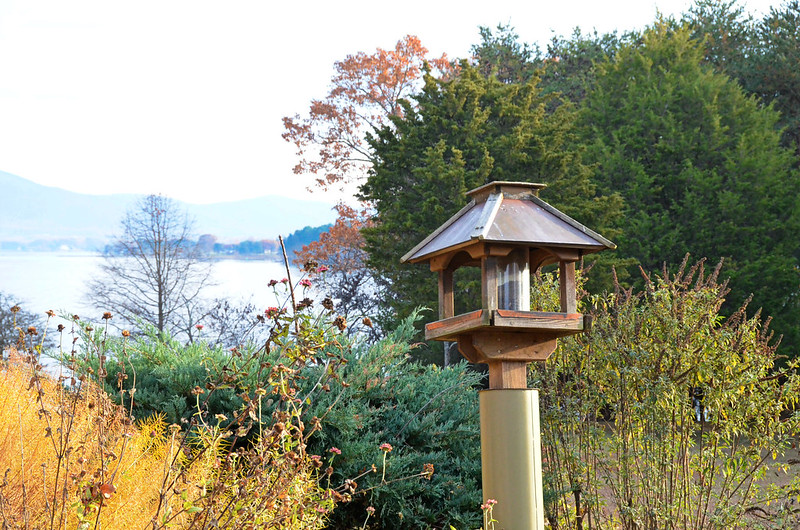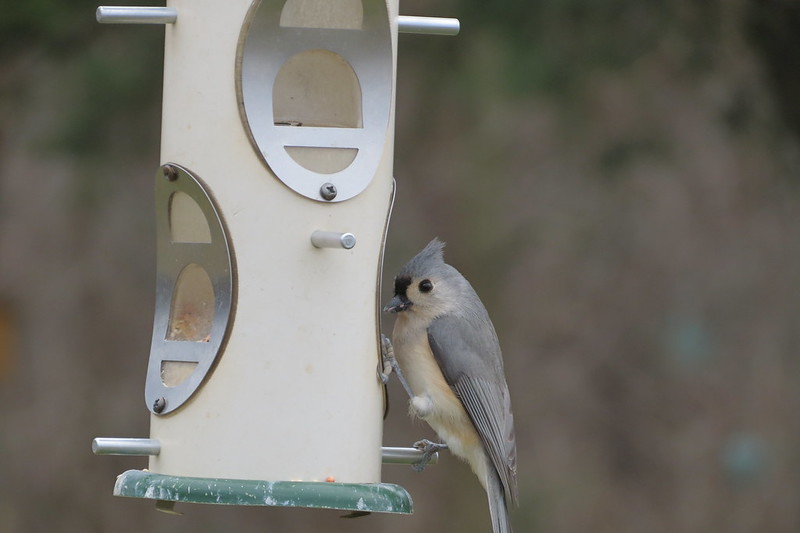Open fires are prohibited throughout the park from midnight to 4 p.m. through April 30 per the 4 p.m. Burning Law. This includes wood and charcoal. Gas is permissible. Campground fires are allowed during the restricted time if a camp host is on duty and signage to that effect is posted in the campground. Failure to observe the 4 p.m. Burning Law can result in a fine. Contact the Park Office for additional information.
Read Our Blogs
Backyard birding - feeding tips
Feeding is the easiest way to attract birds directly to your backyard. This can be as simple as hanging a feeder and waiting for feathered visitors to arrive. However, there are ways to attract different varieties of birds while keeping them safe. Follow these suggestions for the best results.
1. Select feeders that are durable and easy to clean.
There are a variety of feeder types on the market. Consider a few factors when making a selection. Is the feeder durable enough for all weather conditions long-term? Will it keep the seed dry in the rain or snow? Is it squirrel-proof? If a large animal, such as a raccoon, knocks it to the ground, will it break? Is it easy to clean?

Select feeders that are durable and easy to clean. Squirrels, raccoons and other
large animals can break the plastic and other cheap materials.
2. Select a feeder that holds the type of food you will provide.
Bird feeders are designed for different types of food. Read the product description to be sure the feeder matches the type of food you will offer. A hummingbird feeder is very different from a suet feeder, for example. Seed feeders can be very different too. Some feeders are meant for very small seed, such as millet, and others are designed for larger foods such as peanuts.

There are a variety of feeders designed for different types of food.
3. Offer a variety of food to attract a variety of species.
Like humans, birds have food preferences so providing choices will attract more birds to your yard. Black oil sunflower seeds attract the most birds and are less expensive than other types of seed. They can also be purchased with the shells removed, which will mean less waste and clean up for you. Provide fruit for berry-eating birds such as robins, bluebirds, waxwings and mockingbirds. Tanagers and orioles will eat an orange sliced in half and placed on a skewer. Sparrows and juncos prefer the seeds that fall to the ground under the feeder such as millet. Dried fruit and peanut mixes are preferred by nuthatches, titmice and woodpeckers. Avoid seed blends with milo, oats and wheat, which are cheap fillers and usually discarded by the birds.

Tube feeders are popular with humans and birds.
4. Keep foods separated.
Offer different seeds and food types in different feeders. Birds will choose the food they prefer. When several seed types are offered together in one feeder, birds will toss the foods they do not like to the ground, creating a mess as well as wasted food.
5. Location, location, location...
Choosing the location of your feeders is just as important as choosing the right food. Feeders should be placed at different levels for different birds (think ground feeders versus tree feeders). Feeders should also be placed near shrubs or covered areas to provide safety. Coopers Hawks and other birds of prey can easily snatch a feeding songbird from a feeder if there is no nearby protection. Most importantly, avoid window collisions by placing your feeder the appropriate distance from windows. One billion birds die every year from colliding with a window. Place feeders within three feet of a window or more than ten feet away. Commercial products, such as UV stickers, can be placed on your windows to make them more visible to the birds.

Place feeders near trees or brush to offer protection
from animals that can prey on smaller birds.
6. Keep your birdfeeders clean.
You wouldn’t want to be served spoiled food on dirty dishes at a restaurant. It is not acceptable for the birds either. Wash your feeders regularly. Each time a feeder is empty, bring it inside and clean it with hot, soapy water. Be sure to rinse thoroughly and allow to dry completely before refilling. Bring your feeders inside during inclement weather to avoid seeds getting wet and moldy. Fresh fruit and nectar feeders should be cleaned more frequently, every other day is best. Rake discarded seeds and shells from under the feeders. Good housekeeping habits help prevent illness and disease.
Editor's Note:
If you missed Jessica's earlier posts on backyard birding, find them here:
Backyard birding – getting started
If you have read the article and have a question, please email nancy.heltman@dcr.virginia.gov.
Search for blogs
By Park
Categories
Cabins
Camping
Fishing
History and Culture
Other
Programs and Events
Trails
Volunteers
Water Fun
Archive
2024
2023
2022
2021
2020
2019
2018
2017
2016
2015
2014
2012














